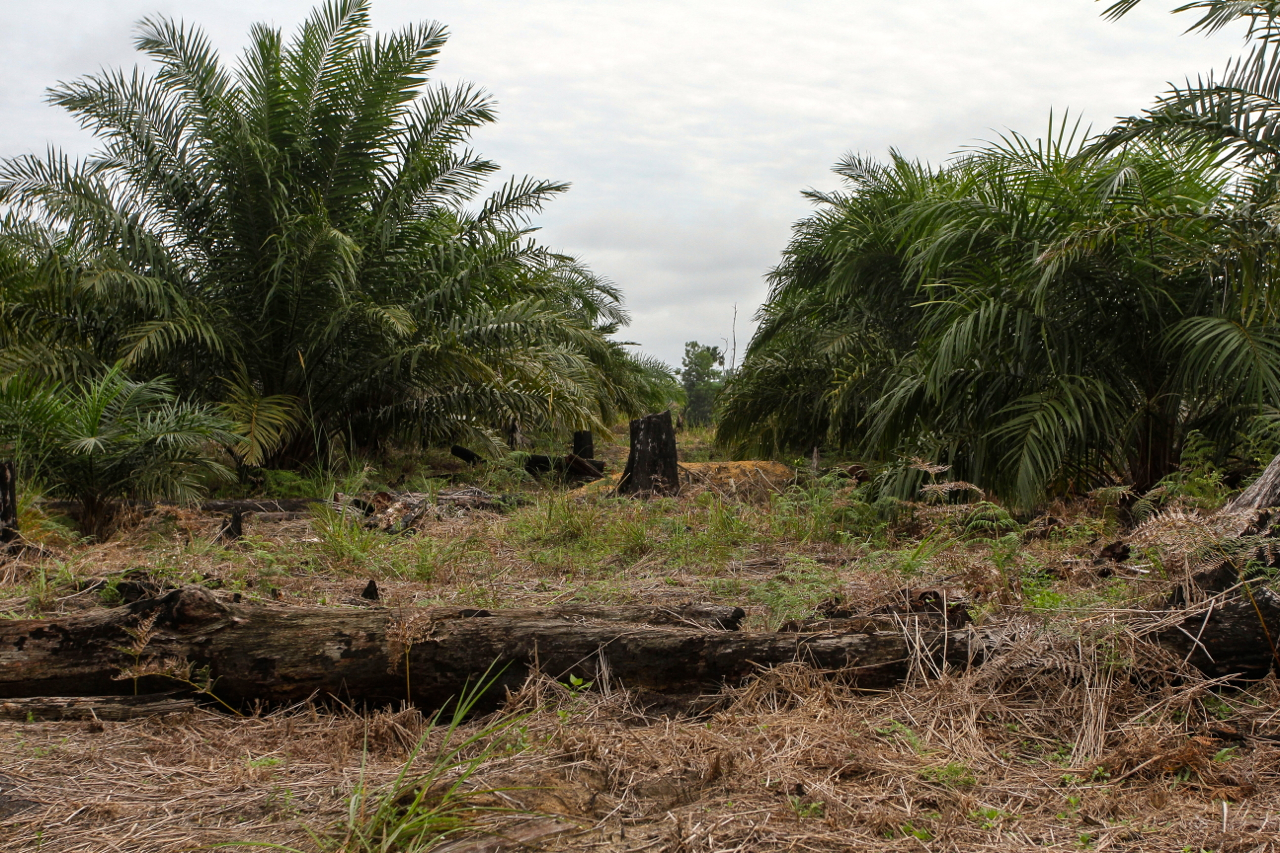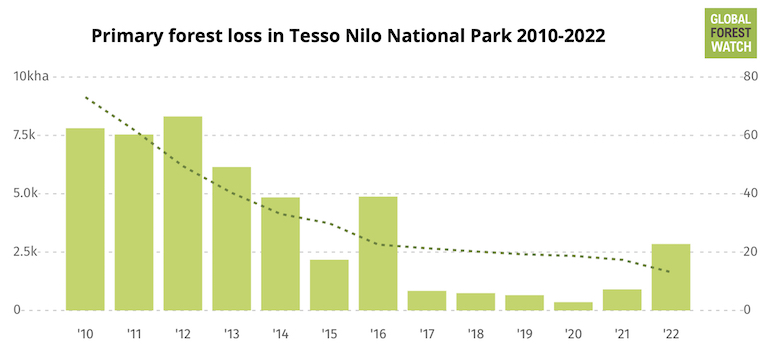- Sumatra’s Tesso Nilo National Park boasts one of the highest levels of lowland plant diversity known to science and harbors an estimated 3% of the planet’s mammal species.
- But industrial tree plantations, encouraged by the COVID-19 pandemic and boosted by high palm oil prices, are quickly supplanting the park’s remaining habitat.
- Satellite data show the park lost 87% of its primary forest cover between 2002 and 2022, most of which was cleared after the government expanded Tesso Nilo’s boundaries in 2009
- Preliminary data from GFW, along with satellite imagery, indicate 2023 has been another particularly bad year for the park’s remaining habitat, with clearings nearly severing Tesso Nilo’s last large tract of forest by September.
Home to iconic, threatened wildlife and extraordinary biodiversity, Indonesia’s Tesso Nilo National Park is continuing to crumble. Satellite data and imagery show deforestation jumped yet again in 2022 — with 2023 poised to be the year when the park’s last remaining large tract of forest is cut in two.
Tesso Nilo, situated in the province of Riau on the island Sumatra, harbors an estimated 4,000 plant species, giving the park one of the highest levels of lowland plant diversity known to science. Its dense forests provide habitat to around 3% of Earth’s mammal species, according to World Wildlife Fund – Indonesia, including critically endangered Sumatran tigers (Panthera tigris sumatrae) and Sumatran elephants (Elephas maximus sumatranus).
But Tesso Nilo’s forests — and the animals that depend on them — are quickly disappearing. The park lost 87% of its primary forest cover between 2002 and 2022, according to satellite data from monitoring platform Global Forest Watch (GFW).


In total, 58,300 hectares (583 square kilometers or around 225 square miles) of primary rainforest was lost from Tesso Nilo in those two decades, according to GFW data. Of that, the majority — 48,000 ha (480 sq km or around 185 sq mi) — was lost after 2009 — the year Indonesia’s government expanded Tesso Nilo’s borders in an effort to safeguard the area’s remaining habitat from industrial agriculture, primarily oil palm plantations.

An uptick in deforestation in Tesso Nilo since since 2021 is due in large part to the COVID-19 pandemic, which reduced conservation activities in the park, according to Yuliantony, who goes by one name and is the executive director of the Tesso Nilo National Park Foundation.
“But at the same time the price of palm oil has surged and this became a lure to open land for oil palm planting primarily at a time when job conditions are difficult,” Yuliantony told Mongabay in 2022.
The market price of palm oil briefly reached a record high in April 2022 before subsiding in July 2022. It has since largely plateaued at a level that exceeds most pre-2021 prices.
Satellite imagery visualized by Google Timelapse shows how deforestation has progressed in and around Tesso Nilo National Park.
Preliminary data from GFW and satellite imagery indicate 2023 has been another particularly bad year for the park’s remaining habitat. Satellite imagery captured December 2022 by Planet Labs show the park’s only remaining large tract of rainforest was still largely unfragmented. However, clearings began expanding into it from the west and south in March and had almost completely cut across its middle by September.
Satellite imagery from Planet Labs shows how deforestation encroached into and through Tesso Nilo National Park’s last large tract of primary forest between January and September 2023.
In addition to habitat loss, clearings and the roads that connect them open areas to hunters.
However, even if much of Tesso Nilo’s rainforest has been lost, researchers say the park’s wildlife can still be saved if conservation efforts focus on safeguarding its remaining habitat.
“Continued loss of Tesso Nilo, its endemic biodiversity, and its wildlife of global importance such as Sumatran elephant and tiger, could result in reduced wildlife dispersal across greater Riau, and an increased chance of isolation and extinction in the near future,” wrote the authors of a 2019 study published in PLOS ONE that looked at the effects of roads on the park’s habitat “but efforts to conserve Tesso Nilo should continue because there is evidence that wildlife can use the small patches of forest in and around Tesso Nilo even if the forests of the park cannot be fully restored.”
Banner Image: Sumatran elephants, by Rhett A. Butler/Mongabay.
Editor’s Note:This story is powered by Places to Watch, a Global Forest Watch (GFW) initiative designed to quickly identify concerning forest loss around the world and catalyze further investigation of these areas. Places to Watch draws on a combination of near-real-time deforestation alerts, automated algorithms and field intelligence to identify new areas on a monthly basis. In partnership with Mongabay, GFW is supporting data-driven journalism by providing data and maps generated by Places to Watch. Mongabay maintains complete editorial independence over the stories reported using this data. Sign up for GFW’s monthly email updates featuring these stories.
Feedback: Use this form to send a message to the editor of this post. If you want to post a public comment, you can do that at the bottom of the page.
